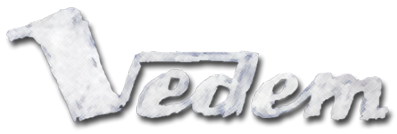 BLOCK G VI
BLOCK G VI
In several houses mothers with babies and small children under 3 were housed. In L514, a concert and theater hall was located, a library and a reading room. In the end of the war, all these houses burned down.
HOME FOR BABIES
Today we bring you a report from the doctor in charge of the home for babies and toddlers in Terezín. Before beginning the report proper, we would like to give you some data to think about. 25,000 persons have died in the ghetto, 92 children were born, present inhabitants number 43,000, and so far 100,000 persons have passed through the ghetto. Babies in Terezín!
Like most of the other children in Terezín, our smallest, the infants and toddlers, are placed in a single home especially suitable for them. That is in the houses near the "Prague" road, with a view of parkland. About one hundred and eighty children between the ages of two weeks and eighteen months live here, as close as possible to their mothers, who stay in rooms specially assigned to them. Some of these babies came to us on the transports, some were born in Terezín and were sent to us from the maternity ward from ten to fourteen days after their birth.
The nurseries are very pretty, usually full of sunshine, and the children have every comfort that can be afforded them in Terezín. Each one of them has a pretty little cot, a shelf, there is a table in the room, a wash basin, a sink for dishes, a small side table with a medicine chest, chairs, scales. The mothers and the nurses see to it that the children are clean and the rooms tidy.
In the homes there is also what is called a milk kitchen, where the food for the babies is prepared. Then there is a collection point for the laundry, which is sent almost daily to the central laundry, and returned. There is a branch station of Youth Care with a nice supply of clothing and underwear, diapers, a sewing room for mending the children's laundry, and of course the inevitable administrative office. This office, for the time being, houses the pharmacy. Small children need constant care and this is why their mothers are exempt from labor. Furthermore about sixty trained nurses are employed, taking twelve-hour shifts. Several physicians monitor the children's health, most of them specialists, some of whom live in the home. We also have a nice clinic which, however, is hardly ever used by the babies. They are usually seen by the doctors in the rooms where they live.
How do such tiny creatures live and how do they spend their day? They usually wake up early, then they have their morning bath, get their breakfast, that is, they are breast fed by their mothers, or they get some broth, then they are put back to bed, where they can amuse themselves as they like, depending on their temperament. The bawlers bawl, some sleep, some coo, some observe their surroundings and behave like little monkeys in a cage. A healthy child is a lovely creature and a joy to look at and observe. At ten o'clock they get their next feeding, then comes the major doctor's round, then there are the daily walks. The day passes in the wink of an eye. Normally the babies are fed five times a day, the last time being at ten o'clock in the evening. Naturally there are exceptions to the rule every day, for the children may be ill, and we have even had epidemics of children's diseases that claimeda substantial number of lives.
What a joy it is to look at a healthy child, and what a sad sight a sick baby is. The child is helpless and cannot say where it hurts. It's entirely up to the nursing staff to recognize what is wrong with the little patient, to diagnose the problem and to act in time. From what has been written it may be seen that in Terezín everything possible, under the circumstances, is being done for the babies. The children are mostly doing well, and if you happen to glance into a pram passing in the street, you will see a healthy, tanned, pretty child.
Still, we can only hope their situation will soon change, and that they will be given a chance to grow up in a healthier environment, like other children.
- Dr. G. A. (Unknown author)
PHOTOS BLOK G VI
The list of objects
- 1 - Ghetto museum
- 2 - Terezín town hall
- 3 - Z 414
- 4 - L 410
- 5 - Marktplatz
- 6 - L 415
- 7 - Q 418
- 8 - Seat of the SS kommandatur
- 9 - Engineer barracks
- 10 - Seat of the ghetto guard
- 11 - L 318
- 12 - Block F III
- 13 - Seat of czech gendarmes
- 14 - Block H II
- 15 - L 324
- 16 - The Podmokly barracks
- 17 - The Ústí barracks
- 18 - The Dresden barracks19 - G VI
- 20 - Stadtpark
- 21 - The Vrchlabí barracks
- 22 - The Kavalier barracks
- 23 - Former brawery
- 24 - Badhauusgasse 21
- 25 - The Magneburg barracks
- 26 - The Hannover barracks
- 27 - Bakery
- 28 - Bahnhofstrasse
- 29 - The Hanburg barracks
- 30 - Jagerkaserne
- 31 - Southern hill
- 32 - The Sudeten barracks
- 33 - Westgasse - Sokolovna
- 34 - Central Mortuary
- 35 - The ramparts
- 36 - The cemetery with the crematorium
- 37 - Bohušovice nad Ohří
- 38 - The Bohušovice hollow
- 39 - The bulwark gardens



